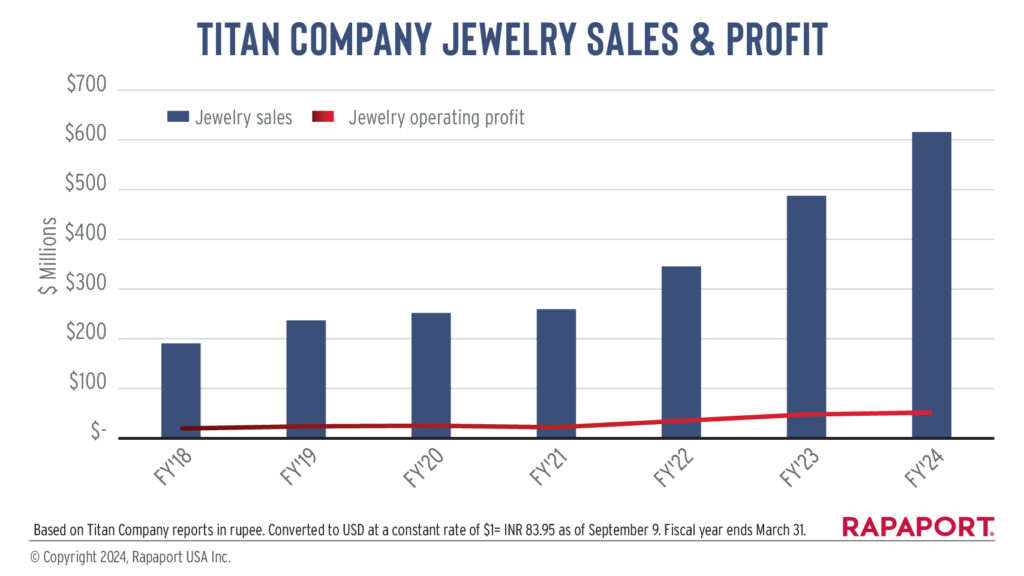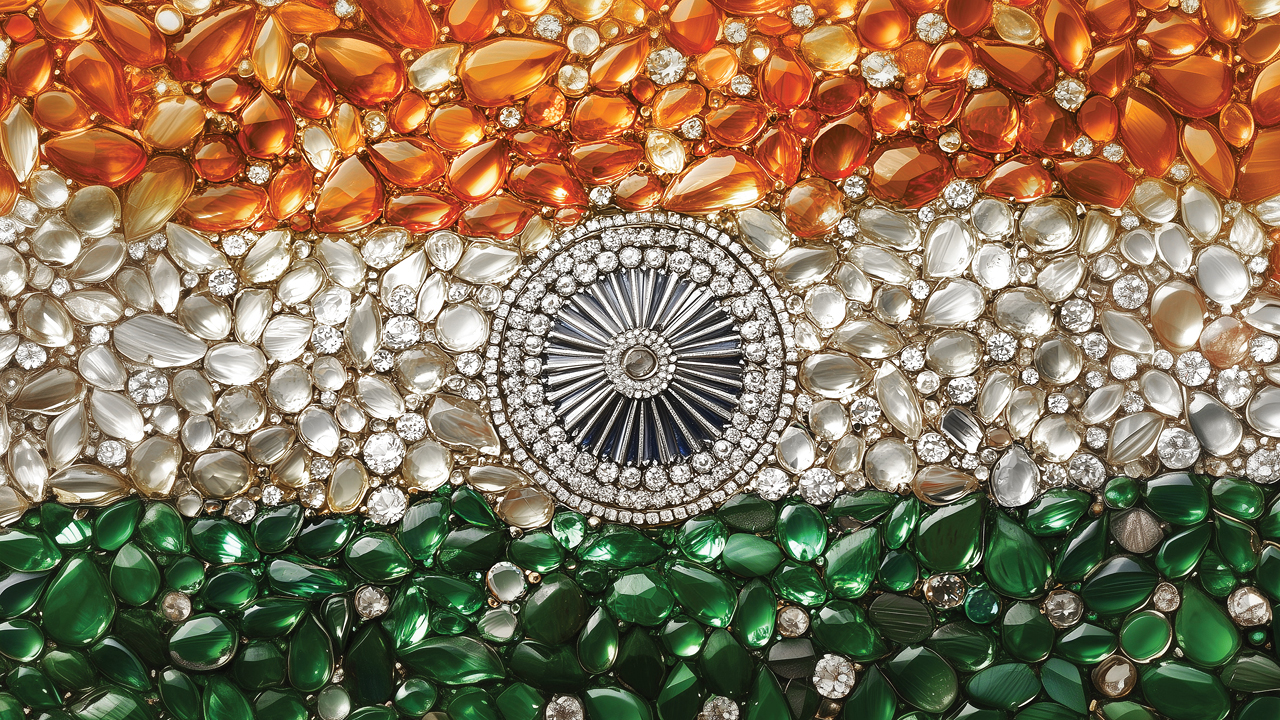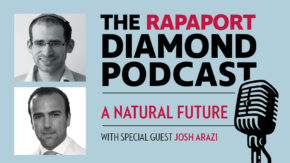There’s a constant buzz about Turner Road, the upscale thoroughfare that passes through the heart of Mumbai’s trendy Bandra West neighborhood. Bandra has gained a reputation for attracting the city’s up-and-coming, be they tech execs, property moguls or Bollywood elites. They live, eat, drink, and socialize there. Turner Road is where they buy fine jewelry.
The street is lined with the full gamut of local jewelers, ranging from well-established family businesses to the more imposing chain stores.
“We were very lucky to get this location,” says Neil Sonawala, managing director of Zen Diamond India, a recent addition to Turner Road. “We grabbed it as soon as the space became available.”
Flanked between the De Beers-owned Forevermark and Tanishq, India’s largest jewelry chain, Zen Diamond opened in early August, marking the Turkish brand’s first foray into India. The group’s timing was deliberate as India’s “growth is expected to accelerate in the next few decades,” stresses Emil Guzelis, its founder and chairman.
India is set to overtake China as the second-largest diamond-consuming country, surpassed only by the dominant US, Boston Consulting Group (BCG) asserted in a De Beers-commissioned report that it published in May. Demand in India is projected to rise at a compounded average rate of 5% to 8% through 2033, BCG predicted.
“Growth will be underpinned by rising disposable incomes, a strong jewelry demand, expanded retailer operations, and a further building of desirability for diamond jewelry catalyzed by the diamond-jewelry industry,” the report explained.
Economic boost
Expansion is primarily into tier 2 and tier 3 cities — classified by a government system according to population size — which are experiencing an economic boom, says Vishal Murkar, manager for business development at International Gemological Institute (IGI), a grading business focused on the Indian market.
India is the fastest-growing major economy, the World Bank said in its India Development Update in early September.
The economy grew 8.2% in fiscal 2023-24, from 7% the previous year, the World Bank reported, with a significant expansion of public infrastructure, private investment in real estate and a rebound in the manufacturing sector driving growth.
There was a concerted effort by the government to make India more marketable in services and manufacturing, notes Pranay Narvekar, founder of Pharos Beam, a consultancy to the diamond and jewelry industry.
Furthermore, the government has focused on “cleaning up,” in the past five to 10 years. “A lot of the pain points have been addressed, or they tried to address them,” he says.
These include streamlining the law governing goods and services tax (GST), which helped curb the unofficial economy and raise tax collections which could fund social upliftment and infrastructure projects. Policies such as demonetization — in which the government swiftly introduced new bank notes and canceled old ones in circulation — clamped down on counterfeit cash. The government also focused on enabling digital channels, particularly for payments.
Sonawala observed a change in the way India operated and was perceived during Covid-19. The country engaged in the manufacturing of vaccines at very affordable prices and administered them efficiently — not an easy task considering the size of the population, he adds.
All these factors contributed to making India more investor friendly. “A lot of international companies wanted to de-risk, and India became a natural choice, also because it provides so many workers,” he continues.
Apple, for example, has doubled down on India not only as a growth consumer market but to drive much of its manufacturing capability. The tech giant produced $14 billion worth of iPhones in India in fiscal 2023-24, Bloomberg reported in April. It’s part of a shift away from China as relations between US firms and the Xi government soured, the report added.
All that has led to job creation and an expansion of the middle class, which is fueling the jewelry sector. “People are looking for ways to splurge, and that is driving growth,” explains Jignesh Mehta, cofounder and managing director of retail brand Divine Solitaires. “That includes buying and investing in jewelry.”
Fashionable investment
That enthusiasm was on display at the India International Jewellery Show (IIJS) Premiere in early August. The event generated around $12 billion worth of business, reported the Gem & Jewellery Export Promotion Council (GJEPC), which organized the six-day event.
The record number of orders were an expression of confidence in the upcoming holiday season, as IIJS is considered a platform from which jewelers can prepare inventory for Diwali — a strong jewelry-buying festival that this year occurs on October 31.
There was particularly strong demand for gold jewelry even as prices of the precious metal have surged to record levels in recent months. Activity was stimulated by the government’s decision in the week preceding IIJS to reduce import duties on gold, silver and platinum.
“In India, gold is not seen as jewelry. It’s an investment, even at these prices,” Narvekar observes. Consumers see some investment value in diamond jewelry, but their purchases are more for fashion and self-expression purposes, adds Ghanshyam Dholakia, cofounder of Hari Krishna Exports and managing director of the group’s Kisna retail operation.
Diamond jewelry is resonating more with younger consumers, noted the BCG report.
“Although the 18-to-24 age group in India acknowledges gold’s long-term value, they do not regard it as the most desirable choice,” the report stated. “This is especially true among urban young women, who feel less emotionally connected to gold than older generations.”
Brand expansion
Diamonds have aspirational value among consumers, adds Divine Solitaires’ Mehta. “The trend is to have diamonds as a status symbol but without overdoing it,” he explains.
Sonawala agrees, describing Zen Diamond’s design language as modern, international and trendy. “It’s contemporary jewelry for everyday wear and for occasions,” he comments.
That sentiment is certainly true in the major metro cities, but it’s quickly spreading to the smaller centers, spurring interest for brands to position themselves in those markets. Zen Diamond is planning additional stores in Mumbai as well as in Delhi and Bangalore, before embarking on its hyper-expansion phase in the tier 2 and 3 cities.
With more money circulating in the country, these smaller cities have suddenly become huge markets for jewelry, Mehta asserts. “When we discuss expansion with jewelers it’s not slow growth; they talk about a leap from 100 to 160 stores,” he notes.
He estimates that diamond sales have increased 50% to 60% in the last four years. Around the same time, Divine Solitaires has doubled its points of sale.
Conglomerates enter
Many have made their expansion strategy public. Kisna is planning to increase its standalone franchise footprint from 33 to 75 by year end, while also continuing to raise its shop-in-shop locations where it currently has over 1,000 counters.
Titan Company, which, as part of Tata Group, is considered the largest of the conglomerates involved in jewelry, said in a first-quarter earnings call that it planned to open 40 to 50 Tanishq stores and 70 to 80 Mia locations — as well as a substantial number of CaratLane shops — in the next 12 to 24 months. Titan has enjoyed high double-digit-percentage growth in each of the past three years (see graph). Its jewelry sales increased 26% to INR 51.62 billion ($615 million) in the fiscal year that ended March 31, 2024.

Other major corporations have also identified “the jewelry opportunity.” Aditya Birla Group aims to rank among the top three jewelry brands in the country within the next five years, according to media reports.
It invested INR 50 billion (approximately $600 million) in its venture called Novel Jewels, with plans to build large-format, exclusive retail stores across the country, featuring in-house brands with bespoke designs. The company launched its flagship Indriya brand in July.
“The major expansion is largely being driven by the conglomerates, but there are also traditional, one-store family-owned businesses going to multiple stores and increasing their branding and awareness,” says Devansh Shah, a partner at Venus Jewel, an India-based manufacturer.
The new China
India’s growth provides some reprieve for local diamond manufacturers, which are reeling in the decline of global demand. The domestic market is compensating for the loss in exports due to the global recession, Piyush Goyal, the minister of commerce and industry, said at the opening of IIJS.
“Our supply to the domestic market is now at about 30% of our production, whereas it was 8% to 10% about seven or eight years ago,” says Shah.
That said, the opportunity may be limited to larger suppliers, and the increase may also reflect sluggishness in other major markets.
“India is about 10% of the market. On average, you’re not going to be able to [supply] much more than that [of your production],” Narvekar stresses. The local market is much more competitive than in the broader global environment, he acknowledges; prices are much tighter.
Still, India is currently the lone positive story in the diamond industry. New customers are coming in, and existing clients are moving to diamonds. Stores are expanding, and they need to fill those new locations with inventory,” Dholakia says. “We saw a similar expansion in China between 2009 and 2013. That’s the situation in India today. You could see from the IIJS show, we’re very optimistic.”
Main image: David Polak/Midjourney
Stay up to date by signing up for our diamond and jewelry industry news and analysis.



